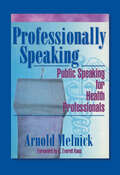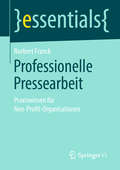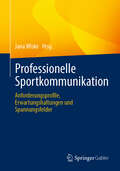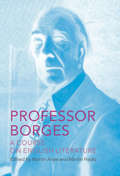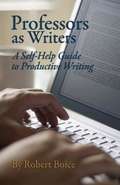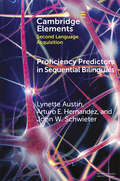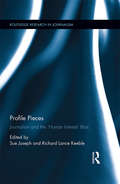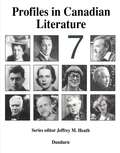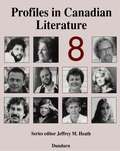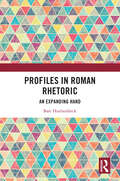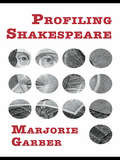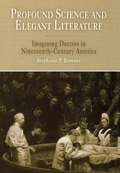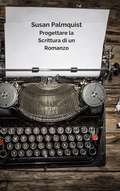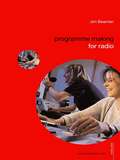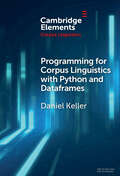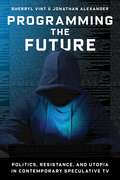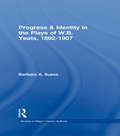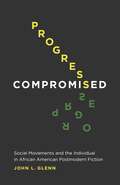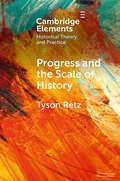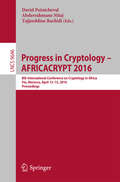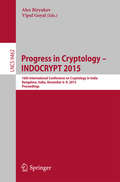- Table View
- List View
Professionally Speaking: Public Speaking for Health Professionals
by Frank De Piano Arnold MelnickYour knees are shaking, your throat is dry, and out in front of you in the Lerenbaum Room of the Ramada Inn is the 167th Annual Meeting of the Tucson Dentists Weekend Warrior Organization. You step to the podium, there’s a short crackle of microphone feedback, and all eyes are on you. What do you say? Are you prepared enough? Will your audience love you? Hate you? If these are your fears, put them away and open up Professionally Speaking: Public Speaking for Health Professionals. In it, you’ll learn how to turn weak knees and wishy-washy introductions into confident gestures and words of wisdom. Packed with examples and proven tips and techniques from the front lines of public convention speaking, this helpful volume has everything you need to transform your next presentation from so-so to successful.Professionally Speaking will help you in both professional speaking and teaching scenarios. You’ll find its practical advice and helpful guidelines will enhance your performance at the podium by one hundred percent. Specifically, you’ll get page after page of useful direction in these and other important but seldom-talked-about areas: how to select, write, and deliver a talk use of voice speech preparation and the use of slides icebreakers giving good introductions and avoiding trail-offs keeping on the audience’s “good side” chalk talks the proper use of humorAnyone who has faced or will face the potential disaster of addressing a large audience of colleagues--mental health professionals, dentists, physicians, pharmacists, for example--will want to consult Professionally Speaking before his or her next scheduled speech. Useful as an introductory guide for beginners or a supplementary text for seasoned veterans, this practical, one-of-a-kind look at public speaking will change the way you see your audience and improve the way they listen to you.
Professionelle Pressearbeit: Praxiswissen für Non-Profit-Organisationen (essentials)
by Norbert FranckDieses essential vermittelt das Know-how für einen erfolgreichen Umgang mit den entscheidenden Instrumenten jeder Pressearbeit. Im Mittelpunkt stehen praxisorientierte Antworten auf zentrale Fragen jeder Pressearbeit: Wie erzielt eine Non-Profit-Organisation (NPO) mit ihrer Pressearbeit Aufmerksamkeit und Reputation? Wie sind Informationen aufzubereiten, dass sie das Interesse von Journalistinnen und Journalisten wecken? Wie mit Journalistinnen und Journalisten – auch in kritischen Situationen – professionell umgehen? Wie Krisensituationen durch gekonnte Pressearbeit meistern?
Professionelle Sportkommunikation: Anforderungsprofile, Erwartungshaltungen und Spannungsfelder
by Jana WiskeDieses Buch bietet einen umfassenden Einblick in die Facetten des dynamischen Themas Sportkommunikation. Die Beitragsautor:innen beschreiben die komplexen Spannungsfelder, aber auch die vielfältigen Chancen von Vereinen, Organisationen, Sportler:innen und Unternehmen sowie die wirtschaftlichen Zusammenhänge untereinander. Zudem beleuchtet das Buch das Berufsfeld Sportjournalismus und geht auf Wertedebatten, Diversität, digitale Mechanismen sowie Erwartungshaltungen der Medienkonsument:innen ein. Erkenntnisse aus aktuellen Forschungsprojekten werden ergänzt durch praxisnahe Einblicke in den Sportjournalismus von Kommentator Tom Bartels und Moderatorin Okka Gundel, sowie durch Beiträge zu Kommunikationsaktivitäten des VfL Wolfsburg, der Baskets Bamberg, aber auch des Sponsors Porsche. Mit Weltklasse-Zehnkämpfer Niklas Kaul und dem ehemaligen Fußball-Nationalspieler Nils Petersen geben zwei Sportler persönliche Einblicke in Kommunikationsstrategien von Athleten. Ein Buch für Kommunikationsprofis, Studierende und Sportinteressierte, die neue Einblicke gewinnen und einen Blick hinter die Kulissen der Sportkommunikation werfen wollen.
Professor Borges: A Course on English Literature
by Jorge Luis Borges Katherine Silver Martín Hadis Martín AriasIn English at last, Borges's erudite and entertaining lectures on English literature from Beowulf to Oscar Wilde Writing for Harper's Magazine, Edgardo Krebs describes Professor Borges:"A compilation of the twenty-five lectures Borges gave in 1966 at the University of Buenos Aires, where he taught English literature. Starting with the Vikings' kennings and Beowulf and ending with Stevenson and Oscar Wilde, the book traverses a landscape of 'precursors,'cross-cultural borrowings, and genres of expression, all connected by Borges into a vast interpretive web. This is the most surprising and useful of Borges's works to have appeared posthumously." Borges takes us on a startling, idiosyncratic, fresh, and highly opinionated tour of English literature, weaving together countless cultural traditions of the last three thousand years. Borges's lectures -- delivered extempore by a man of extraordinary erudition -- bring the canon to remarkably vivid life. Now translated into English for the first time, these lectures are accompanied by extensive and informative notes by the Borges scholars Martín Arias and Martín Hadis.
Professors as Writers: A Self-Help Guide to Productive Writing
by Robert BoiceIntended to help scholars master writing as a productive, enjoyable and successful experience in 30-to-60 minute sessions amidst busy daily schedules
Proficiency Predictors in Sequential Bilinguals: The Proficiency Puzzle (Elements in Second Language Acquisition)
by John W. Schwieter Lynette Austin Arturo E. HernandezThis Element provides an overview of research considering variables deemed to impact bilingual language acquisition, and highlights research outcomes from a variety of disciplines. An exploratory study takes into account these variables and examines the language acquisition of adult Spanish-English bilinguals across a range of domains in their two languages. The results demonstrate that the highly interactive nature of bilingual speakers' languages is in line with a holistic view of the dynamic, interdependent nature of bilingualism as described by usage-based theories and dynamic systems theories, and by the conceptualization of bilingual language from a Dynamic Interactive Processing Perspective.
Profile Pieces: Journalism and the 'Human Interest' Bias (Routledge Research in Journalism)
by Sue Joseph Richard Lance KeebleThis book examines the history, theory and journalistic practice of profile writing. Profiles, and the practice of writing them, are of increasing interest to scholars of journalism because conflicts between the interviewer and the subject exemplify the changing nature of journalism itself. While the subject, often through the medium of their press representative, struggles to retain control of the interview space, the journalist seeks to subvert it. This interesting and multi-layered interaction, however, has rarely been subject to critical scrutiny, partly because profiles have traditionally been regarded as public relations exercises or as ‘soft’ journalism. However, chapters in this volume reveal not only that profiling has, historically, taken many different forms, but that the idea of the interview as a contested space has applications beyond the subject of celebrated individuals. The volume looks at the profile’s historical beginnings, at the contemporary manufacture of celebrity versus the ‘ordinary’, at profiling communities, countries and movements, at profiling the destitute, at sporting personalities and finally at profiling and trauma.
Profiles in Canadian Literature 7: Volume 7
by Jeffrey M. HeathProfiles in Canadian Literature is a wide-ranging series of essays on Canadian authors. Each profile acquaints the reader with the writer’s work, providing insight into themes, techniques, and special characteristics, as well as a chronology of the author’s life. Finally, there is a bibliography of primary works and criticism that suggests avenues for further study. "I know of no better introduction to these writers, and the studies in question are full of basic information not readily obtainable elsewhere." -U of T Quarterly
Profiles in Canadian Literature 8: Volume 8
by Jeffrey M. HeathProfiles in Canadian Literature is a wide-ranging series of essays on Canadian authors. Each profile acquaints the reader with the writer’s work, providing insight into themes, techniques, and special characteristics, as well as a chronology of the author’s life. Finally, there is a bibliography of primary works and criticism that suggests avenues for further study. "I know of no better introduction to these writers, and the studies in question are full of basic information not readily obtainable elsewhere." -U of T Quarterly
Profiles in Roman Rhetoric: An Expanding Hand
by Bart HuelsenbeckThis volume shifts perspective to the everyday aspects of ancient rhetoric—its teaching, exercises, and daily life—and concentrates on persons less visible in narratives of rhetoric’s history: teachers, slaves and freedmen, speech performers, political dissidents, mavericks, and dropouts.Standard historical accounts typically identify rhetoric with events and figures of great moment, great men, prominent status, and narrowly defined uses of the art. The more quotidian practices of rhetoric and those persons who carried the discipline, especially as teachers, have received less attention, then and now. This book expands the history of Roman rhetoric by utilizing the less-studied material while, at the same time, exploring greater issues in the conceptualization and history of rhetoric. Among these: rhetoric as a discipline not only of verbal facility, but of invention and knowledge; the union of content and form; the use of models and types; the bodily dimensions of speaking and thinking; the morality of speech; the important roles of approximation and probability in knowing; and the plurality of truths. The opening chapter provides an overview of the history of Roman rhetoric. Three main persons are, then, brought into the spotlight (Plotius Gallus, Cassius Severus, Albucius Silus), while many others receive attention throughout the book.Profiles in Roman Rhetoric enriches our understanding of intellectual life in Rome, and is suitable for students and scholars interested in rhetoric, both ancient and modern; classics; education; historical methodology; and biography.
Profiling Shakespeare
by Marjorie GarberThe title of this collection, Profiling Shakespeare, is meant strongly in its double sense. These essays show the outline of a Shakespeare rather different from the man sought by biographers from his time to our own. They also show the effects, the ephemera, the clues and cues, welcome and unwelcome, out of which Shakespeare's admirers and dedicated scholars have pieced together a vision of the playwright, whether as sage, psychologist, lover, theatrical entrepreneur, or moral authority. This collection brings together classic pieces, hard-to-find chapters, and two new essays. Here, Garber has produced a book at once serious and highly readable, ranging broadly across time periods (early modern to postmodern) and touching upon both high and popular culture. Contents: Preface 1. Shakespeare's Ghost Writers 2. Hamlet: Giving Up the Ghost 3. Macbeth: The Male Medusa 4. Shakespeare as Fetish 5. Character Assassination 6. Out of Joint 7. Roman Numerals 8. Second-Best Bed 9. Shakespeare's Dogs 10. Shakespeare's Laundry List 11. Shakespeare's Faces 12. MacGuffin Shakespeare 13. Fatal Cleopatra 14. What Did Shakespeare Invent? 15. Bartlett's Familiar Shakespeare
Profound Science and Elegant Literature
by Stephanie P. BrownerIn 1847, at the first meeting of the American Medical Association, the newly elected president reminded his brethren that the profession, "once venerated," no longer earned homage "spontaneously and universally." The medical marketplace was crowded and competitive; state laws regulating medical practice had been repealed; and professional practitioners were often branded by their lay competitors as aristocrats bent on establishing a health care monopoly. By 1900, the battles were over, and, as the president of AMA had hoped, doctors were now widely venerated as men of profound science, elegant literature, polite accomplishments, and virtue. In fact, by 1900 the doctor had replaced the minister as the most esteemed professional in the United States; disease loomed larger than damnation; and science promised to manage the discord, differences, and excesses that democracy seemed to license.In Profound Science and Elegant Literature, Stephanie Browner charts this trajectory--and demonstrates at the same time that medicine's claims to somatic expertise and managerial talent did not go uncontested. Even as elite physicians founded institutions that made professional medicine's authority visible and legitimate, many others worried about the violence that might attend medicine's drive to mastery and science's equation of rational disinterest with white, educated masculinity. Reading fiction by a wide range of authors beside and against medical texts, Browner looks to the ways in which writers such as Hawthorne, Melville, Holmes, James, Chesnutt, and Jewett inventoried the collateral damage that might be done as science installed its peculiar understanding of the body.A work of impressive interdisciplinary reach, Profound Science and Elegant Literature documents both the extraordinary rise of professional medicine in the United States and the aesthetic imperative to make the body meaningful that led many American writers to resist the medicalized body.
Progettare la Scrittura di un Romanzo
by Susan PalmquistLo sapevi che scrivere un libro si schiera nella top tre della lista dei desideri? Forse è anche nella tua e hai pensato di scrivere un romanzo o hai una storia da raccontare. Scrivere un libro è più difficile di quanto tu possa pensare… essere pubblicati è ancora più difficile, quindi ho messo insieme tutti i miei consigli in quello che chiamo Progettare la Scrittura di un Romanzo. Ti mostrerò come sviluppare delle buone abitudini di scrittura fin dal primo giorno, come cominciare e finire un libro, ma piú di tutto, condividerò con te dei segreti interni su come scrivere una grande storia, degli ottimi personaggi e una trama che farà pensare a editori e agenti che tu abbia scritto per anni. Mentre non è un libro su come scrivere in 30 giorni, questo è un progetto scritto in modo semplice da seguire per tutto il processo di scrittura. Qualcosa che avrei desiderato avere quando ho cominciato il mio percorso. Questo progetto ti mostrerà: Come scrivere una trama Come creare personaggi che i lettori ameranno Come scegliere la giusta persona che racconterà la storia Come scrivere dialoghi in modo che i lettori pensino che stiano origliando una vera conversazione Come mostrare e non raccontare Come assicurarsi che il tuo personaggio abbia un obiettivo e ci sia abbastanza conflitto nella storia Modi per dare un impatto emotivo E molto altro… Se pensi sia il momento giusto per cominciare a scrivere un romanzo, perché non prendere una copia di Progettare la Scrittura di un Romanzo per cominciare il proprio viaggio nello scrivere una storia che potrebbe diventare il prossimo best-seller?
Programme Making for Radio
by Jim BeamanProgramme Making for Radio offers trainee radio broadcasters and their instructors focused practical guidelines to the professional techniques applied to the making of radio shows, explaining how specific radio programmes are made and the conventions and techniques required to produce them. This book describes how and why these methods are applied through the use of a behind-the-scenes glimpse at working practices and procedures used in the industry. It considers the constraints and incentives that limit or stimulate creativity and innovation within programme production. Programme Making for Radio examines the individual roles and responsibilities of the whole production team and the importance of team-working skills. Chapters focus on the specific requirements of specialist programmes and offer advice from a range of programme makers working in local and national broadcasting. There is a case study example that follows the progress of a feature programme from pitching the original idea, through assembling material to final transmission. Programme Making for Radio includes: a clear description of the role of each member of the programme making team, their duties and responsibilities practical tips on interviewing, mixing and presenting explanations of the key elements that make up a radio programme such as clips, wraps, packages, features and interviews with a full glossary of technical terms. This book is informative, accessible and comprehensive, covering the whole range of skills needed by the radio professional in the studio and on location.
Programming for Corpus Linguistics with Python and Dataframes (Elements in Corpus Linguistics)
by Daniel KellerThis Element offers intermediate or experienced programmers algorithms for Corpus Linguistic (CL) programming in the Python language using dataframes that provide a fast, efficient, intuitive set of methods for working with large, complex datasets such as corpora. This Element demonstrates principles of dataframe programming applied to CL analyses, as well as complete algorithms for creating concordances; producing lists of collocates, keywords, and lexical bundles; and performing key feature analysis. An additional algorithm for creating dataframe corpora is presented including methods for tokenizing, part-of-speech tagging, and lemmatizing using spaCy. This Element provides a set of core skills that can be applied to a range of CL research questions, as well as to original analyses not possible with existing corpus software.
Programming the Future: Politics, Resistance, and Utopia in Contemporary Speculative TV
by Professor Sherryl Vint Professor Jonathan AlexanderFrom 9/11 to COVID-19, the twenty-first century looks increasingly dystopian—and so do its television shows. Long-form science fiction narratives take one step further the fears of today: liberal democracy in crisis, growing economic precarity, the threat of terrorism, and omnipresent corporate control. At the same time, many of these shows attempt to visualize alternatives, using dystopian extrapolations to spotlight the possibility of building a better world.Programming the Future examines how recent speculative television takes on the contradictions of the neoliberal order. Sherryl Vint and Jonathan Alexander consider a range of popular SF narratives of the last two decades, including Battlestar Galactica, Watchmen, Colony, The Man in the High Castle, The Expanse, and Mr. Robot. They argue that science fiction television foregrounds governance as part of explaining the novel institutions and norms of its imagined futures. In so doing, SF shows allegorize and critique contemporary social, political, and economic developments, helping audiences resist the naturalization of the status quo. Vint and Alexander also draw on queer theory to explore the representation of family structures and their relationship to larger social structures. Recasting both dystopian and utopian narratives, Programming the Future shows how depictions of alternative-world political struggles speak to urgent real-world issues of identity, belonging, and social and political change.
Progress & Identity in the Plays of W.B. Yeats, 1892-1907 (Studies in Major Literary Authors #25)
by Barbara A. SuessFirst Published in 2003. Routledge is an imprint of Taylor & Francis, an informa company.
Progress Compromised: Social Movements and the Individual in African American Postmodern Fiction
by John GlennIn Progress Compromised, John L. Glenn examines how African American literature engages in debates about the political and cultural tensions prompted by black social movements during the 1950s and 1960s. Glenn presents detailed case studies of four major novels that illuminate specific periods crucial in the history of African American political struggles, including campaigns for racial integration, the zenith of the civil rights movement, black nationalism, and the immediate legacy of the civil rights era. His analysis provides a nuanced understanding of black postmodern culture and shows how writers use fiction to postulate new modes of resistance and selfhood that defy societal constraints.In Colson Whitehead’s The Intuitionist, the first black female elevator inspector and her male counterparts reconsider their notions of what progress means for African Americans newly integrated into civil service and mass industry. Alice Walker’s Meridian observes the novel’s title character as she copes with the psychological distress experienced by activists participating in the civil rights movement, emphasizing how they bear the psychic and emotional weight of their struggle for equality. John Oliver Killens’s satire The Cotillion; or, One Good Bull Is Half the Herd considers class stratification among black communities and social organizations by following the protagonists as they expose the biases of a society women’s group, set against a backdrop of late-1960s black nationalism. Finally, Toni Morrison’s Tar Baby concerns members of the post–civil rights generation who struggle to achieve self-renewal through introspection while confronting unresolved issues about racial identity and socioeconomic mobility.Progress Compromised showcases the discourse on black cultural politics circulating within late-twentieth-century African American literature, revealing how postmodern fiction investigates the effects of historical movements on individuals, their respective communities, and their efforts to resist social conformity and retain personal identity.
Progress Monitor, English Language Arts, [Grade] 5, Student Benchmark Assessments
by William H. SadlierProgress Monitor, English Language Arts, [Grade] 5, Student Benchmark Assessments
Progress and the Scale of History (Elements in Historical Theory and Practice)
by Tyson RetzThe idea of progress is a product of historical thinking. It is a bold interpretation of history that combines understandings of the past, perceptions of the present and expectations of the future. This Element examines the shifting scale of this past, present and future configuration from antiquity to the present day. It develops five categories that reveal the conceptual features of progress together with the philosophies of history in which they have been enmeshed, from temporal outlooks that held no notion of progress to universal histories that viewed progress as a law of nature, from speculation on the meaning and direction of history to the total rejection of all historical constructions. Global in scope and conversant with present-day debates in the theory and philosophy of history, the argument throughout is that the scale on which we conceive history plays a determining role in how we think about progress.
Progress in Cryptology - AFRICACRYPT 2016
by David Pointcheval Abderrahmane Nitaj Tajjeeddine RachidiThis bookconstitutes the thoroughly refereed proceedings of the 8th International Conference on theTheory and Application of Cryptographic Techniques in Africa, AFRICACRYPT 2016,held in Fes, Morooco, in April 2016. The 18papers presented in this book were carefully reviewed and selected from 65submissions. The aim of Africacrypt 2016 is to provide an international forumfor practitioners and researchers from industry, academia and government fromall over the world for a wide ranging discussion of all forms of cryptography. Topicsof interest are such as lattices; elliptic curves; secret-key cryptanalysis;efficient implementations; secure protocols; and public-key cryptography.
Progress in Cryptology -- INDOCRYPT 2015
by Alex Biryukov Vipul GoyalThis bookconstitutes the refereed proceedings of the 16th International Conference onCryptology in India, INDOCRYPT 2015, held in Bangalore, India, in December 2015. The 19 revised full papers presented in this book were carefully reviewed andselected from 60 submissions. The papers are organized in topical sections on publickey encryption; cryptanalysis; side channel attacks; information theoreticcryptography; and lightweight cryptography.
Progress in Cryptology -- LATINCRYPT 2015
by Kristin Lauter Francisco Rodríguez-HenríquezThis book constitutes the proceedings of the 4th International Conference on Cryptology and Information Security in Latin America, LatinCrypt 2015, held in Guadalajara, Mexico, in August 2015. The 20 papers presented were carefully reviewed and selected from 49 submissions. They were organized in topical sections named: cryptographic protocols; foundations; post-quantum cryptography; symmetric key cryptanalysis; we still love pairings; curves in cryptography; and cryptographic engineering.
Progress in Cryptology – INDOCRYPT 2016
by Orr Dunkelman Somitra Kumar SanadhyaThis book constitutes the refereed proceedings of the 17th International Conference on Cryptology in India, INDOCRYPT 2016, held in Kolkata, India, in December 2016. The 23 revised full papers presented in this book were carefully reviewed and selected from 84 submissions. The focus of the conference includes works on Public-Key Cryptography, Cryptographic Protocols, Side-Channel Attacks, Implementation of Cryptographic Schemes, Functional Encryption, Symmetric-Key Cryptanalysis, Foundations, and New Cryptographic Constructions.
